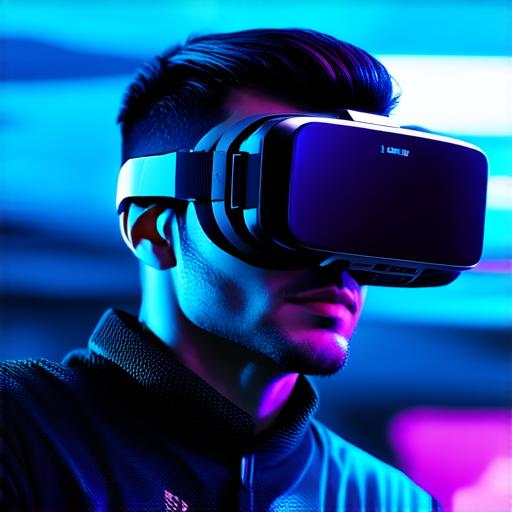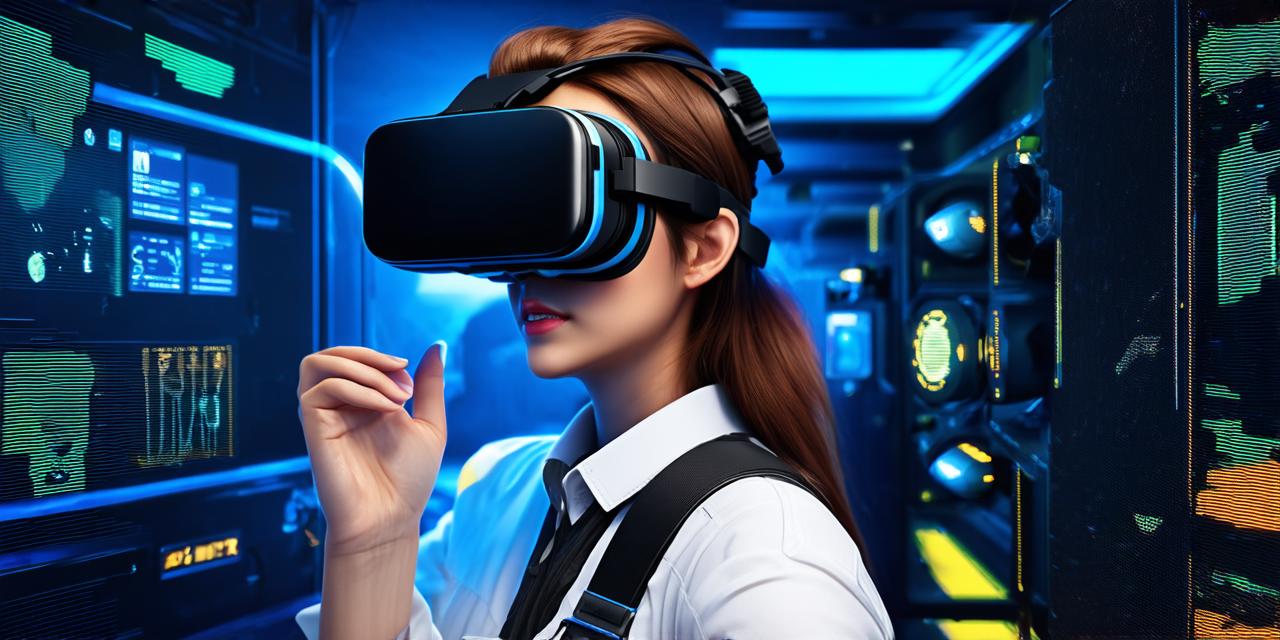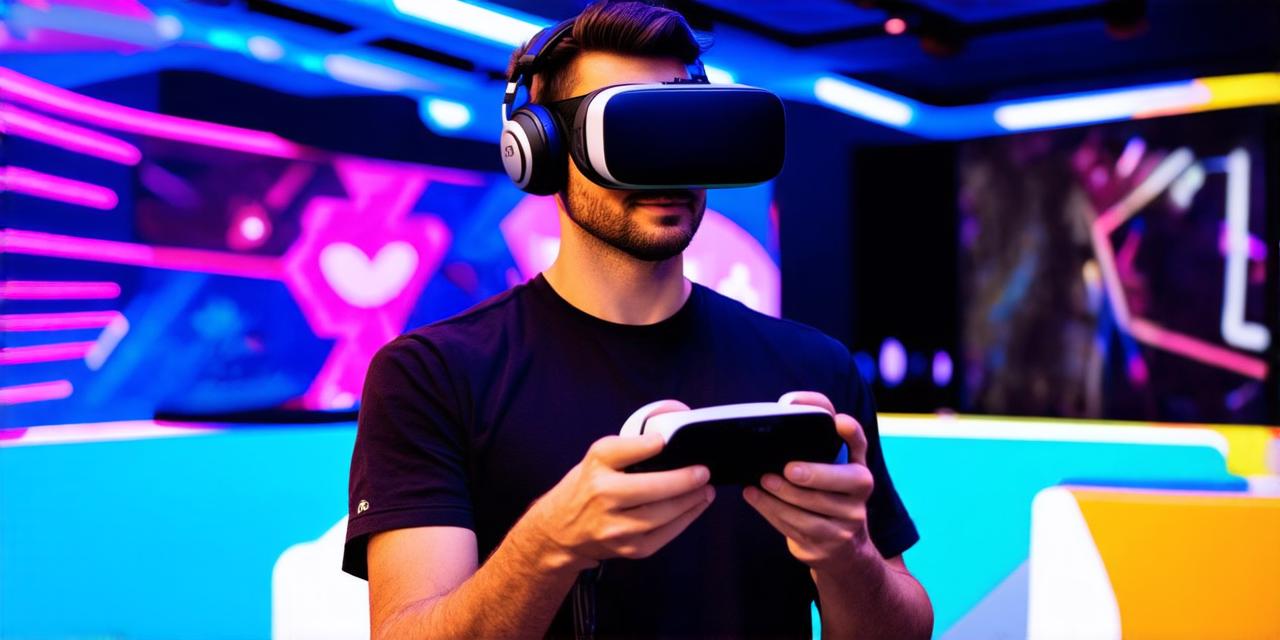The Concept of Virtual Reality:
Virtual reality works by creating an immersive environment that engages all senses. Users wear a headset or goggles that track their movements and create a 3D image of the world around them. This image is then projected onto two screens, one for each eye, creating a stereoscopic effect that enhances the sense of depth and immersion.
Applications of Virtual Reality:
Virtual reality has numerous applications across various fields, including gaming, education, healthcare, and more. In gaming, virtual reality allows players to immerse themselves in a game world like never before. This technology also enables gamers to interact with the environment in new ways, such as by wielding weapons or exploring hidden areas.
In education, virtual reality provides an interactive and engaging way for students to learn. By allowing students to experience history, science, and other subjects in a virtual environment, educators can help them understand complex concepts more easily. Virtual reality also offers the opportunity to conduct simulations that are too dangerous or expensive to perform in real life.
Virtual reality is also being used in healthcare to treat a wide range of conditions. For example, it can be used to simulate surgical procedures, allowing doctors to practice and perfect their techniques before performing them on actual patients. Virtual reality can also help patients with chronic pain by providing a distraction from their condition.
Virtual reality is also being used in the fields of architecture, engineering, and construction. By creating virtual models of buildings and structures, designers can visualize how they will look and function in real life. This technology also enables contractors to make changes to designs and plans quickly and easily, reducing costs and increasing efficiency.
Case Studies:
One example of the potential of virtual reality is seen in the use of this technology in training emergency responders. By creating a virtual environment that simulates various scenarios, such as a building fire or natural disaster, emergency responders can practice their skills in a safe and controlled environment. This technology also allows them to learn from mistakes and improve their performance.
Another example of the use of virtual reality is seen in the field of tourism. By creating virtual tours of popular tourist destinations, such as museums, art galleries, and historical sites, travelers can experience these places without having to physically visit them. This technology also allows people who are unable to travel due to financial or health constraints to explore these places virtually.
Expert Opinions:
According to Dr. Richard Devine, a professor of Psychology at the University of Sussex, virtual reality can be an effective tool for treating mental health disorders such as anxiety and depression. He states that virtual reality provides an environment that is controlled and predictable, which can help reduce stress levels and promote relaxation.
Dr. Sharon Trewin, a professor of Educational Psychology at the University of Western Ontario, also believes that virtual reality has great potential in education. She states that this technology allows students to learn by doing rather than just reading or watching, which can improve their understanding and retention of information.
FAQs:
Q: What is virtual reality?
A: Virtual reality is a technology that creates an immersive environment that engages all senses. Users wear a headset or goggles that track their movements and create a 3D image of the world around them. This image is then projected onto two screens, one for each eye, creating a stereoscopic effect that enhances the sense of depth and immersion.

Q: What are some common uses of virtual reality?
A: Virtual reality has numerous applications across various fields, including gaming, education, healthcare, and more. In gaming, virtual reality allows players to immerse themselves in a game world like never before. This technology also enables gamers to interact with the environment in new ways, such as by wielding weapons or exploring hidden areas. In education, virtual reality provides an interactive and engaging way for students to learn. By allowing students to experience history, science, and other subjects in a virtual environment, educators can help them understand complex concepts more easily. Virtual reality also offers the opportunity to conduct simulations that are too dangerous or expensive to perform in real life. Virtual reality is also being used in healthcare to treat a wide range of conditions. For example, it can be used to simulate surgical procedures, allowing doctors to practice and perfect their techniques before performing them on actual patients. Virtual reality can also help patients with chronic pain by providing a distraction from their condition. Virtual reality is also being used in the fields of architecture, engineering, and construction. By creating virtual models of buildings and structures, designers can visualize how they will look and function in real life.
Q: What are some examples of case studies of virtual reality?
A: One example of the potential of virtual reality is seen in the use of this technology in training emergency responders. By creating a virtual environment that simulates various scenarios, such as a building fire or natural disaster, emergency responders can practice their skills in a safe and controlled environment. This technology also allows them to learn from mistakes and improve their performance. Another example of the use of virtual reality is seen in the field of tourism. By creating virtual tours of popular tourist destinations, such as museums, art galleries, and historical sites, travelers can experience these places without having to physically visit them. This technology also allows people who are unable to travel due to financial or health constraints to explore these places virtually.
Conclusion:
Virtual reality is an emerging technology that has the potential to revolutionize various industries. Its ability to create an immersive and engaging environment makes it a powerful tool for training, education, healthcare, and more. As virtual reality continues to evolve, we can expect to see even more innovative uses of this technology in the future.




